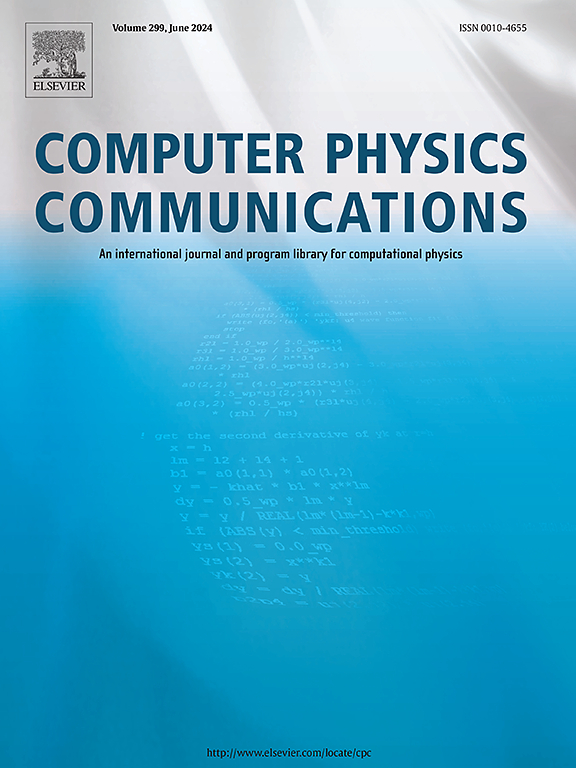Hyper Boris integrators for kinetic plasma simulations
IF 3.4
2区 物理与天体物理
Q1 COMPUTER SCIENCE, INTERDISCIPLINARY APPLICATIONS
引用次数: 0
Abstract
We propose a family of numerical solvers for the nonrelativistic Newton–Lorentz equation in kinetic plasma simulations. The new solvers extend the standard 4-step Boris procedure, which has second-order accuracy in time, in three ways. First, we repeat the 4-step procedure multiple times, using an n-times smaller timestep (). We derive a formula for the arbitrary subcycling number n, so that we obtain the result without repeating the same calculations. Second, prior to the 4-step procedure, we apply Boris-type gyrophase corrections to the electromagnetic field. In addition to a well-known correction to the magnetic field, we correct the electric field in an anisotropic manner to achieve higher-order (th order) accuracy. Third, combining these two methods, we propose a family of high-accuracy particle solvers, the hyper Boris solvers, which have two hyperparameters of the subcycling number n and the order of accuracy, N. The n-cycle Nth-order solver gives a numerical error of at affordable computational cost.
动能等离子体模拟的超鲍里斯积分器
我们提出了动力学等离子体模拟中非相对论牛顿-洛伦兹方程的一组数值解。新的求解器从三个方面扩展了具有二阶精度的标准4步Boris过程。首先,我们使用小n倍的时间步长(Δt/n)多次重复4步过程。我们导出了任意子循环数n的公式,这样我们就不用重复同样的计算就能得到结果。其次,在四步程序之前,我们对电磁场进行了鲍里斯型回旋相位校正。除了众所周知的磁场校正之外,我们还以各向异性的方式校正了电场,以实现高阶(N=2,4,6…)精度。第三,结合这两种方法,我们提出了一系列高精度粒子求解器,即超Boris求解器,它具有子循环数n和精度阶数n两个超参数。n循环n阶求解器在可承受的计算成本下给出了数值误差为~ (Δt/n) n。
本文章由计算机程序翻译,如有差异,请以英文原文为准。
求助全文
约1分钟内获得全文
求助全文
来源期刊

Computer Physics Communications
物理-计算机:跨学科应用
CiteScore
12.10
自引率
3.20%
发文量
287
审稿时长
5.3 months
期刊介绍:
The focus of CPC is on contemporary computational methods and techniques and their implementation, the effectiveness of which will normally be evidenced by the author(s) within the context of a substantive problem in physics. Within this setting CPC publishes two types of paper.
Computer Programs in Physics (CPiP)
These papers describe significant computer programs to be archived in the CPC Program Library which is held in the Mendeley Data repository. The submitted software must be covered by an approved open source licence. Papers and associated computer programs that address a problem of contemporary interest in physics that cannot be solved by current software are particularly encouraged.
Computational Physics Papers (CP)
These are research papers in, but are not limited to, the following themes across computational physics and related disciplines.
mathematical and numerical methods and algorithms;
computational models including those associated with the design, control and analysis of experiments; and
algebraic computation.
Each will normally include software implementation and performance details. The software implementation should, ideally, be available via GitHub, Zenodo or an institutional repository.In addition, research papers on the impact of advanced computer architecture and special purpose computers on computing in the physical sciences and software topics related to, and of importance in, the physical sciences may be considered.
 求助内容:
求助内容: 应助结果提醒方式:
应助结果提醒方式:


